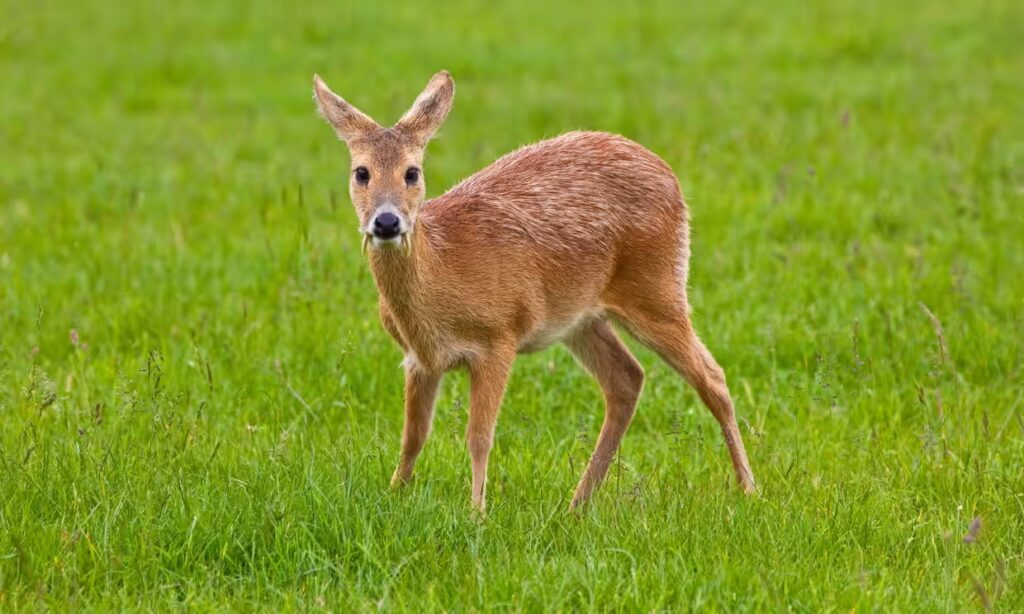Fortuitously, this elusive species discovered a sanctuary in Britain, offering a refuge at a time when their population is diminishing in their native China.
While meandering through the landscapes of Bedfordshire, an enchanting discovery unfolded—a delicate, pearly-white tusk, identified with the expertise of a local country park warden, unveiled itself as a relic from a Chinese water deer (Hydropotes inermis).
This enigmatic Asian species, having staged a grand escape almost a century ago from the confines of the Duke of Bedford’s Woburn Abbey collection in Bedfordshire, now graces the eastern realms of England alongside its smaller compatriot, the muntjac.
Eccentric in its anatomy, the Chinese water deer eschews antlers in favor of elongated canine teeth, wielded by males to assert dominance in the mesmerizing autumnal rut. What adds to their allure is the ingenious adaptability of these tusks, swiveling gracefully to accommodate the deer’s culinary pursuits.
In a twist of fate, these creatures, classified as extraterrestrial in the UK, have serendipitously found a refuge, countering the disheartening trend of their decline in the native landscapes of China. Approximately 10% of the global population now calls East Anglia home, adding a touch of the exotic to the British countryside.
Living up to their name, water deer exhibit a fondness for marshes and damp enclaves, showcasing their prowess as adept swimmers.
Solitary by nature, they adhere to distinct territories, only breaking this rule during the breeding season. Spring unveils a charming spectacle as two to four fawns accompany their mothers until autumn, embarking on their solo ventures thereafter.
Setting themselves apart from other deer species, these enchanting creatures refrain from the customary tree-damaging habits, opting for a more refined palate of herbs and weeds. In doing so, they carve out a distinctive niche, bestowing a whimsical charm upon the British countryside.
